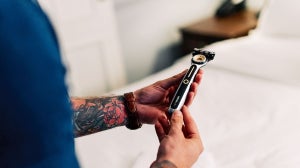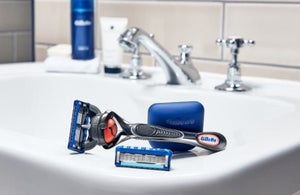
If you're curious about dermaplaning or have considered experiencing the wonders of dermaplaning facials but haven't taken the step due to some common myths about dermaplaning, fear not—we're here to debunk some of the misconceptions that have been holding you back from giving it a go. Let's find out what they are so you can start your dermaplaning journey myth-free.
What are some myths about dermaplaning?
Dermaplaning , a popular skincare technique, has gained significant attention in recent times. However, along with its rise in popularity, many myths and misconceptions have emerged. Let's delve into these myths and debunk them while also introducing some excellent dermaplaning products to enhance your skincare routine.
Myth 1: Dermaplaning causes peach fuzz to grow back thicker and darker
Myth 2: Dermaplaning is a Painful Procedure
Myth 3: Dermaplaning can’t be done at home
Myth 4: Dermaplaning can lead to skin irritation and sensitivity, causing breakouts
Myth 5: Dermaplaning can cause irritation when performed on skin with active acne
Myth 1: Dermaplaning causes peach fuzz to grow back thicker and darker

One common misconception about dermaplaning your face is the fear that it causes facial hair, often referred to as peach fuzz, to grow back thicker and darker. In reality, dermaplaning removes the vellus hair, and the regrowth remains the same texture and colour.
It's important to understand that facial hair growth in women depends on androgen hormone levels, including testosterone and androstenedione. Contrary to the myth, dermaplaning does not alter the texture or colour of regrown hair. To enhance your dermaplaning experience, consider using the Facial Dermaplaning Razor from Venus, which is designed for precise and safe use.
Myth 2: Dermaplaning is a Painful Procedure

Contrary to the myth that dermaplaning is painful, the procedure is actually a relatively painless process. The technique involves gently scraping the skin's surface to remove dead skin cells and fine hair. If you're looking for effective tools for dermaplaning at home, check out the Dermaplaning Blade from Venus, which is designed for optimal precision and comfort. The Dermaplaning Blade is equipped with a protective comb to help prevent nicks and cuts, for a safe and pain-free dermaplaning experience. Its high-quality blades glide smoothly across the skin, removing unwanted hair and exfoliating the surface without causing discomfort.
Myth 3: Dermaplaning can’t be done at home

Another common dermaplaning myth is that it can only be performed by skincare professionals in a clinical setting. In reality , at-home dermaplaning is not only possible but also convenient and cost-effective. Venus offers the dermatologist tested Facial Hair Remover, a compact and easy-to-use tool perfect for at-home dermaplaning. The electric DIY dermaplaning trimmer is designed with precision in mind and can be used to remove unsightly or unwanted facial hair in the comfort of your own home. Its portable size makes it an ideal travel companion, ensuring you can maintain your skincare routine wherever you go.
Myth 4: Dermaplaning can lead to skin irritation and sensitivity, causing breakouts
One persistent myth linked with dermaplaning is the concern that it may lead to skin irritation and sensitivity, ultimately causing breakouts. In reality, if done correctly and with the right products, dermaplaning can be a gentle and non-irritating exfoliation method. To complement your dermaplaning routine, consider using the Facial Cleansing Primer from Venus. The Facial Cleansing Primer is specifically formulated to prepare the skin for dermaplaning, ensuring a clean and smooth surface for the razor to glide across. Enriched with nourishing ingredients, this primer helps minimise the risk of irritation and promotes a soothing dermaplaning experience.
Myth 5: Dermaplaning can cause irritation when performed on sensitive or acne-prone skin

Concerns often arise about the impact of dermaplaning on acne-prone or sensitive skin. Some believe that the procedure may exacerbate existing acne or lead to irritation. However, when done carefully and with suitable products, dermaplaning on sensitive skin like acne-prone skin is possible and effective. To enhance your dermaplaning routine, consider incorporating the Facial Hydration Serum from Venus. The Facial Hydration Serum is designed to provide nourishment and moisture to the skin, leaving your skin feeling refreshed. Its lightweight is suitable for all skin types, including those with acne-prone skin and has been dermatologist tested.
Now that we have debunked the common myths of dermaplaning, you will know that Dermaplaning is a versatile and effective skincare technique that offers many benefits. By incorporating high-quality dermaplaning products into your routine, you can elevate your skincare experience and achieve smoother skin in the comfort of your own home.

Related Articles








